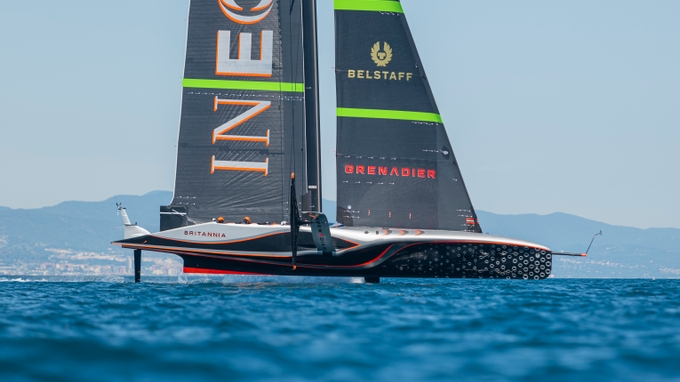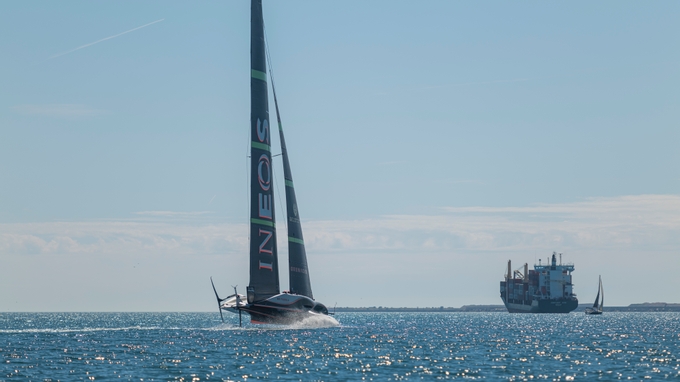INEOS BRITANNIA - LIGHT AIR FLYER
Arguably the fastest design we have yet seen in the new generation of AC75s, certainly one of the most powerful, INEOS Britannia know they have a potent weapon that is more than capable of reversing 173 years of history at the Louis Vuitton 37th America’s Cup and on Saturday it was time to test the lower end capabilities of this rocket-ship. She didn’t disappoint.
In an initial breeze of some 10 knots, the British team set off on a long upwind far out to sea at just after 1pm, clicking into the afternoon zephyrs beautifully with a rock-steady flight and near-perfect end-plating on billiard-table flat waters. Manoeuvres were crisp and sharp with a fast entry into the tacks, a slight dip of the bow and then full power on to build speed. Trim was minimal on the mainsail and jib with small caresses to just get the boat back to target. Giles Scott and Ben Ainslie looked absolutely in tune in these conditions, working well with Luke Parkinson and Leigh McMillan seated in the abaft pods with the cyclors in front of them – an interesting take on the seating positions.
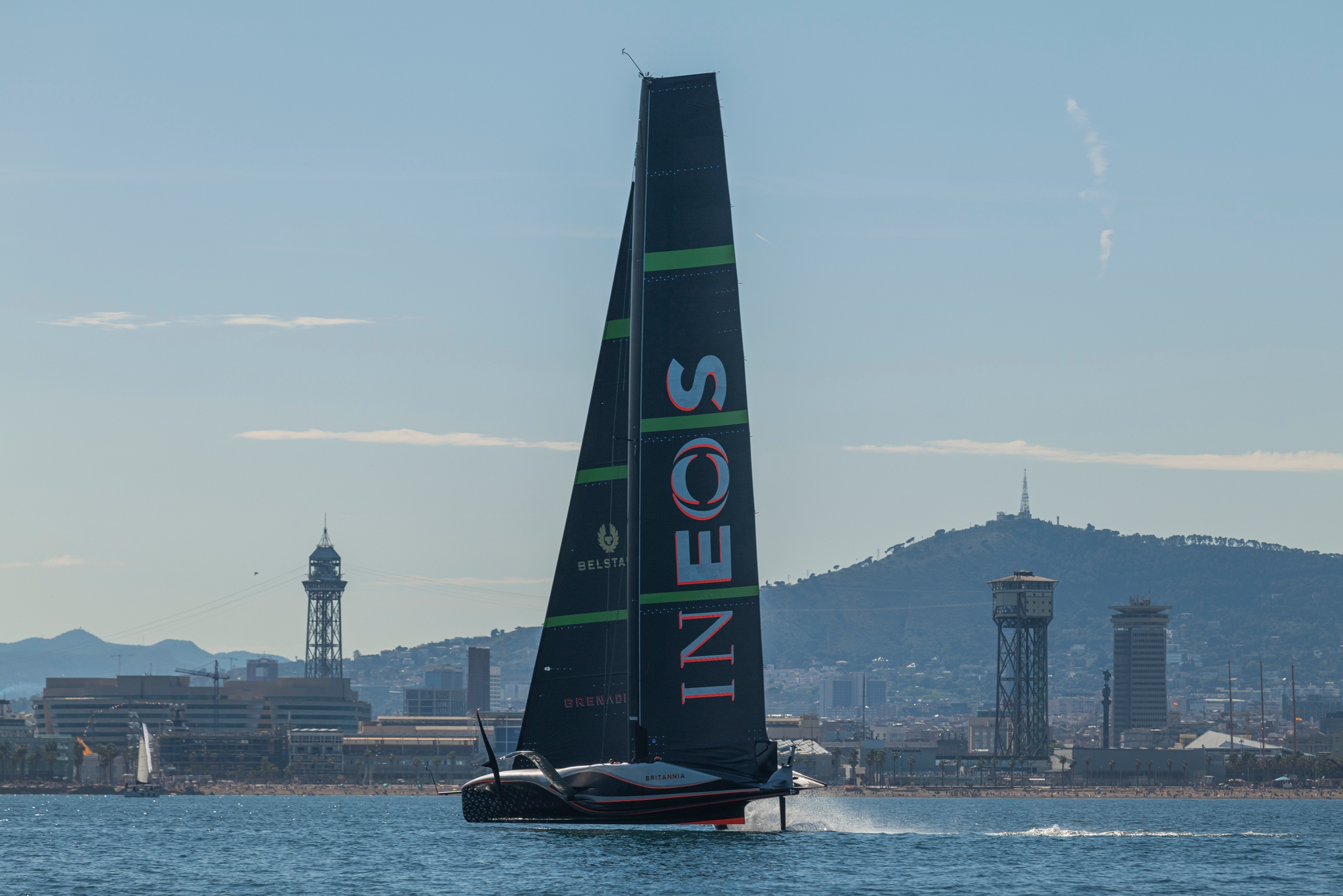
After towing back to near the Port Vell Harbour, the team set off on an equally long downwind where it looked like gybe co-ordination was very much in focus. Flying slightly higher, with a touch of windward heel, it was all about trim levels on the exit with RB3 coming down on its foils to bustle skim post gybe and then immediately build speed before the ride height was adjusted upwards. Impressive technique in the light airs.
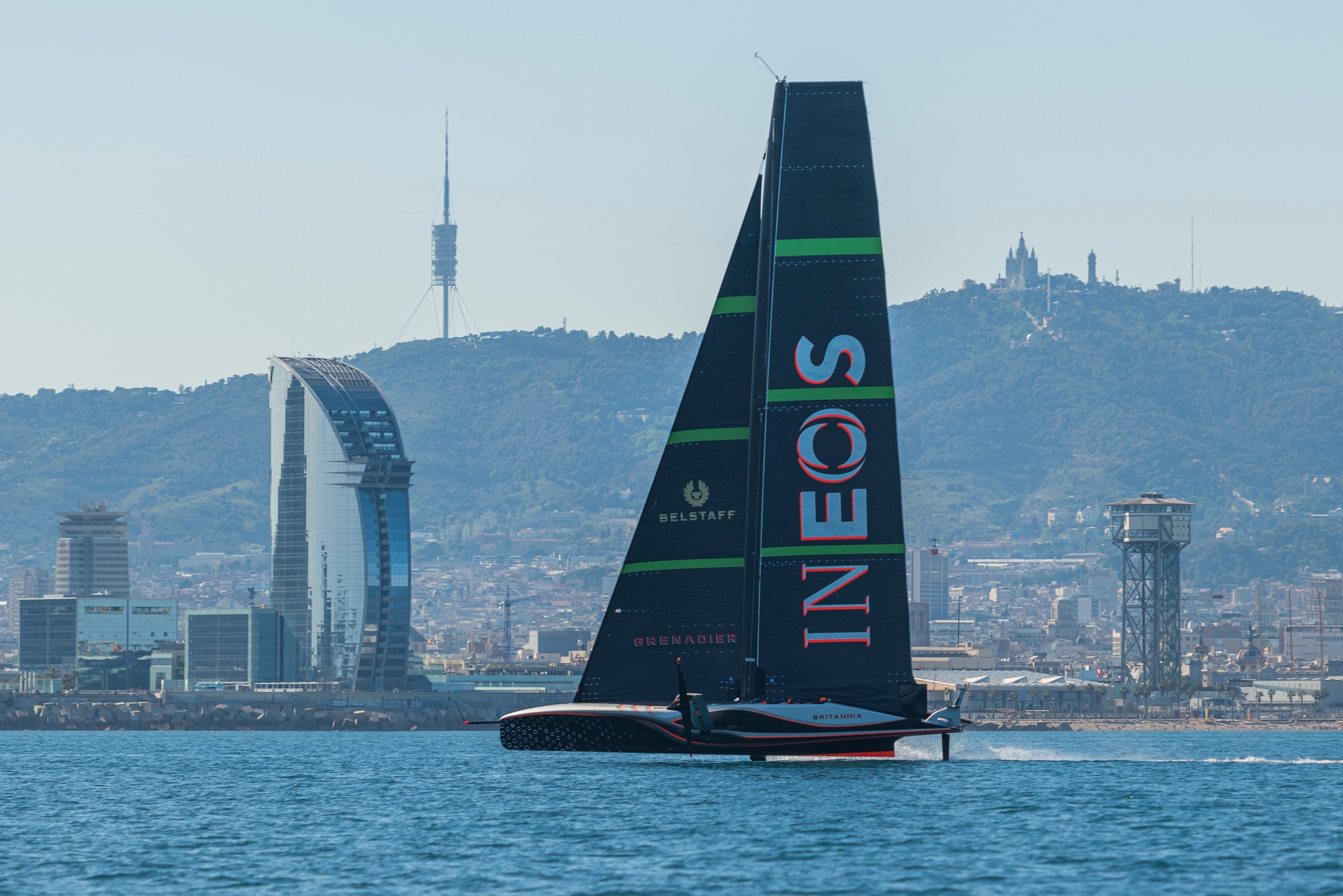
However perhaps the most remarkable take-away from the day was just how easily RB3 gained flight in just 5-6 knots of wind and able to build speeds to around 15-16 knots in those conditions. For sure, the team are increasingly confident in this incredible platform across the full range of conditions and it potency is in no doubt. INEOS Britannia are right in this Louis Vuitton America’s Cup and the smart money is shifting towards the British as they continue their work up and fine-tuning of RB3.
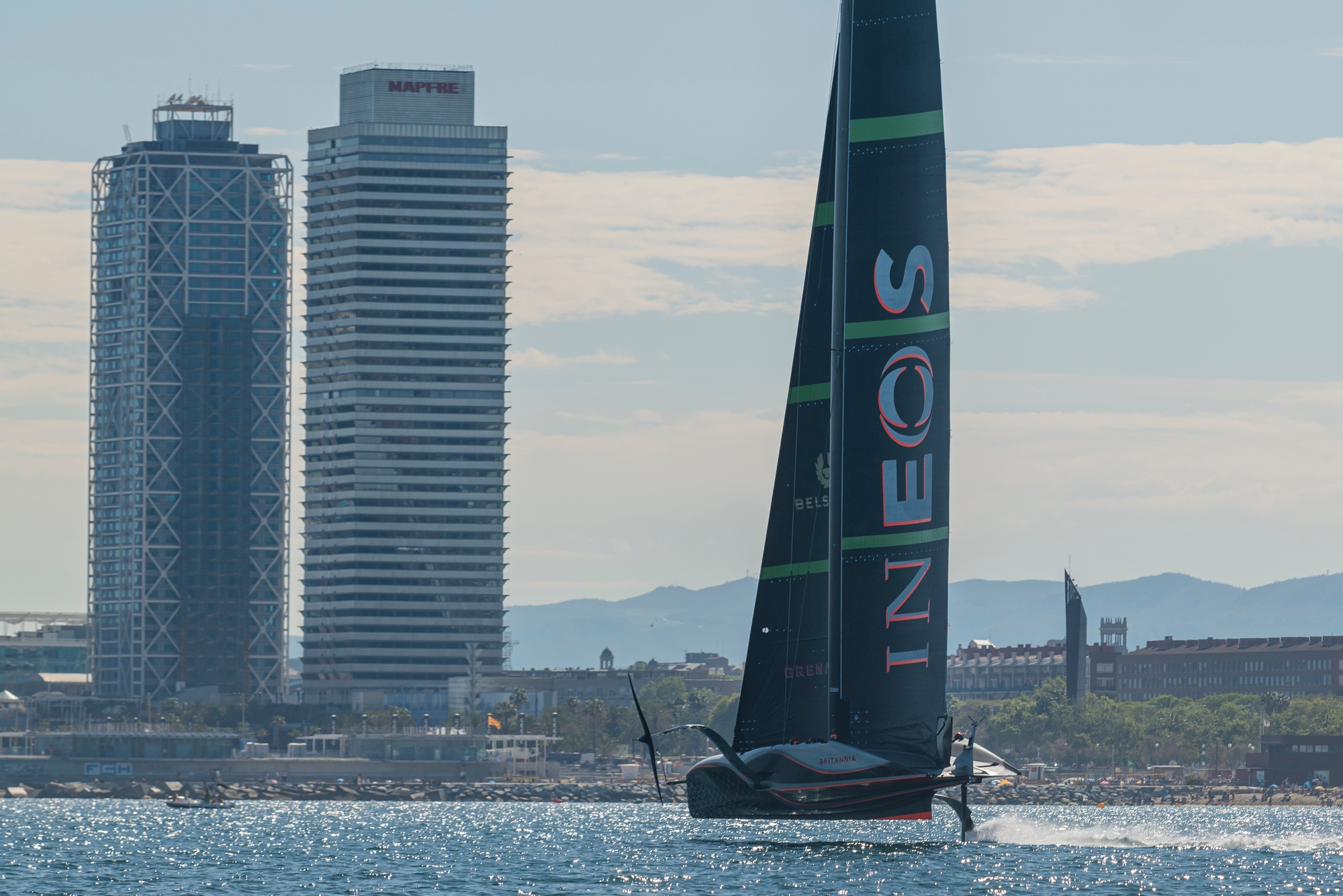
Speaking afterwards, Bleddyn Mon, the vital link between sailors and the tech teams who was on the Chase Boat today, gave his assessment of the session saying: “The aim of today was to really to test the lower end of RB3, the first day we've had out in those conditions and we were very fortunate with the conditions we had, we saw between 10 knots the beginning of the day down to 5 knots at the end, so it was a great day for us to test the bottom end.”
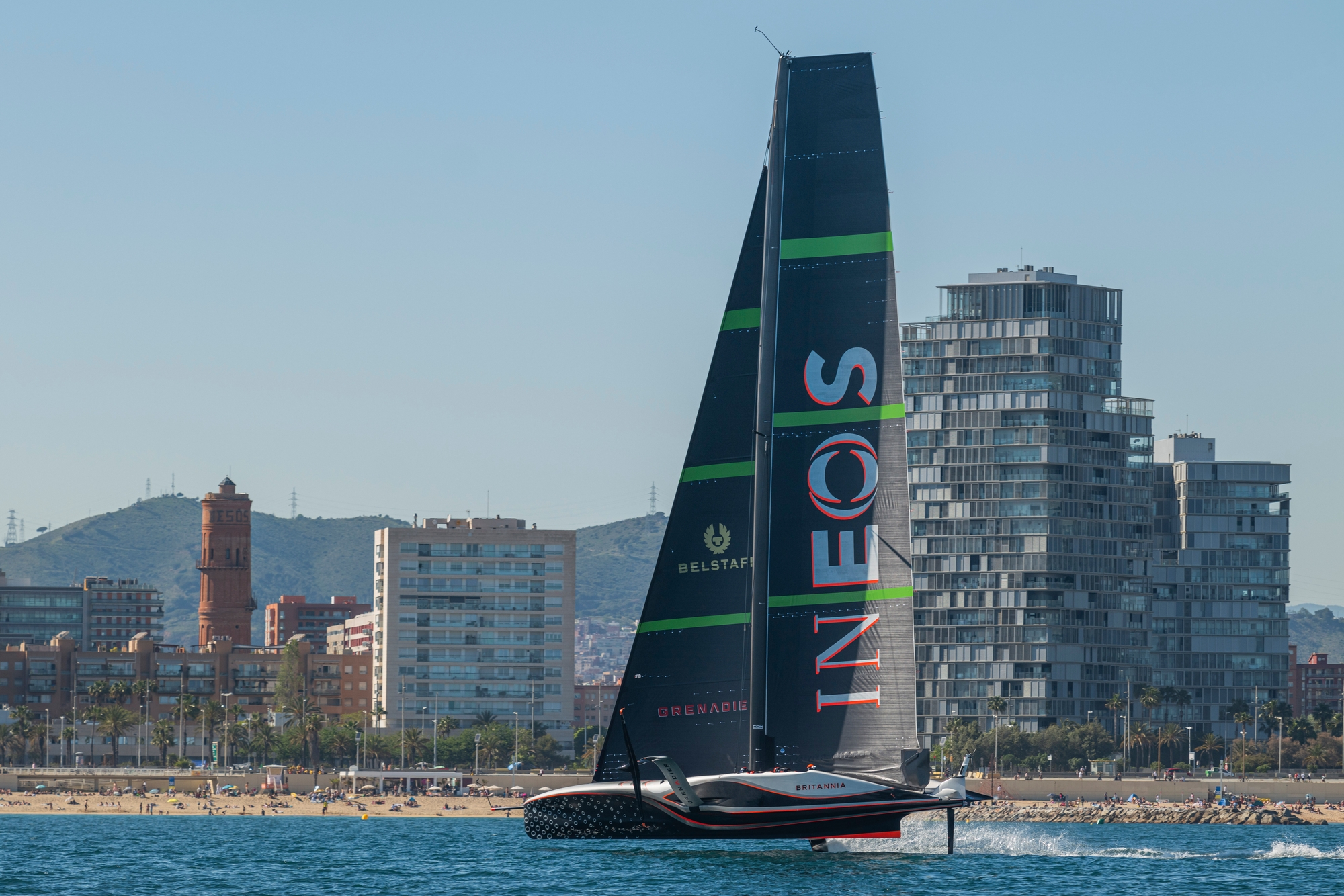
Talking about the key focus in this light weather training run, Bleddyn added: “We were playing around a little bit with the boat state, trying different ride heights but yeah there's a lot of work going on today between the guys on the yacht and the coaches really to try and refine the techniques in the gybes and the tacks and so there's some big gains there and we'll have a look at the videos later on tonight...It was great to be out there on Chase 2 and observe RB3 for the first time it's actually quite nice to be able to step back and see the boat from the outside and we had a few times where we came alongside and were able to have a conversation with the sailors onboard and just discuss what their thoughts and feelings were versus what we could see from off the boat.”
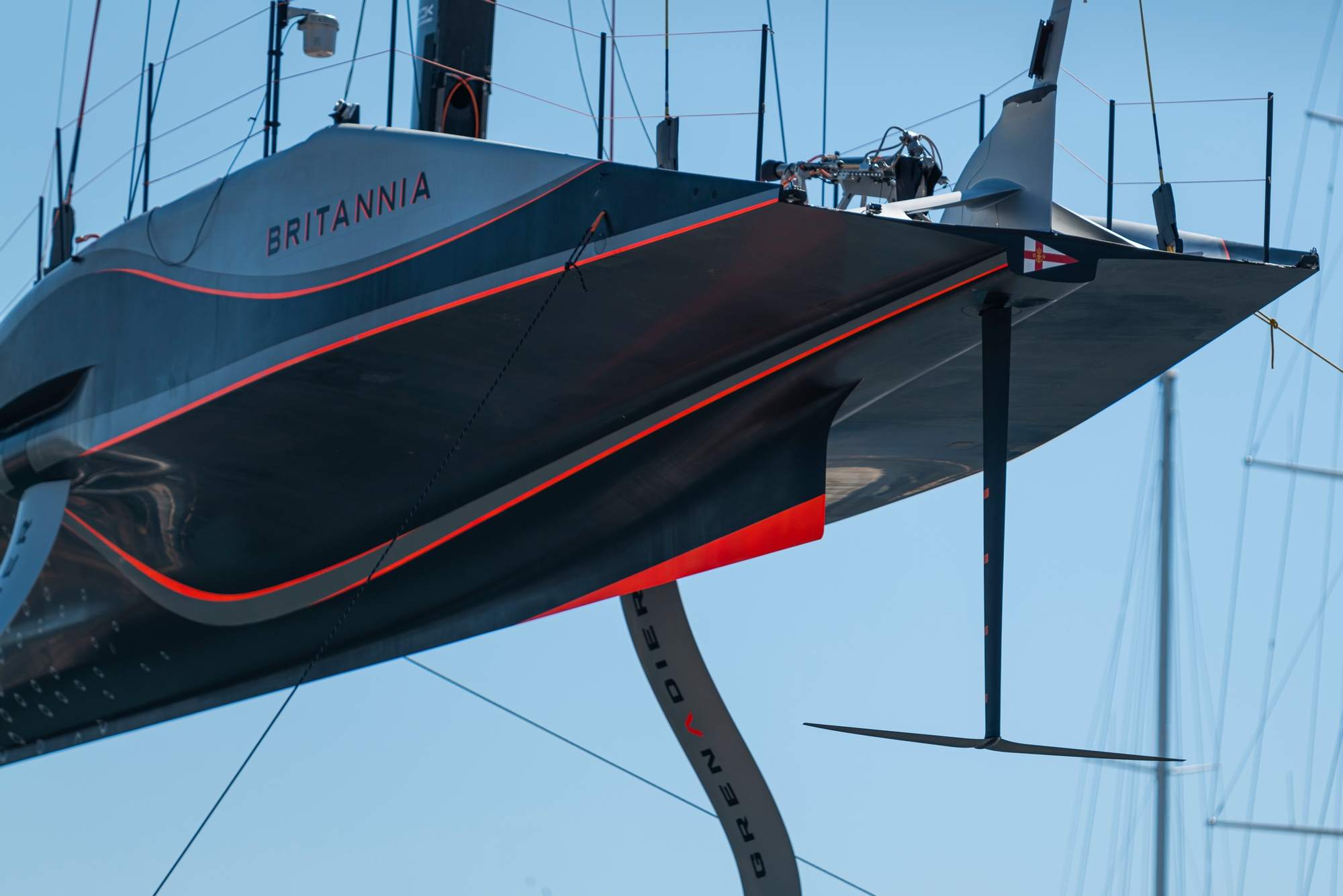
And when asked about the unique crew-layout with the trimmers sat in the aft pod, Bleddyn commented: “There's a few different layouts across the teams and there's a huge amount of trade-offs and compromises that need to be made for positioning of the crew obviously the visibility is one thing, and the centre of gravity of the crew is another thing, so there's quite a lot that goes into that decision and for us that we decided that was the best spot to put our trimmer pilots...it doesn't make much difference to us to be fair whether we're next door to them (the helms) or further away, obviously we communicate with the comms system onboard, so it doesn't make a difference how far away we are from them.”

Great session from the British team and really positive body language on the dock afterwards. This is a campaign that is on the right track – the fast track – and becoming more compelling day by day. (Magnus Wheatley)
On-Water Recon Report – INEOS Britannia: Team INEOS Britannia rolled out RB3 at 10:00 craned in at 10:40 and dock out at 12:30. Mainsail MN1 was hoisted and paired to a J2 jib at the entrance of the harbour at around 12:50 . Luke Parkinson was trimming on starboard side today instead of Bleddyn Mon who was in the coach boat.
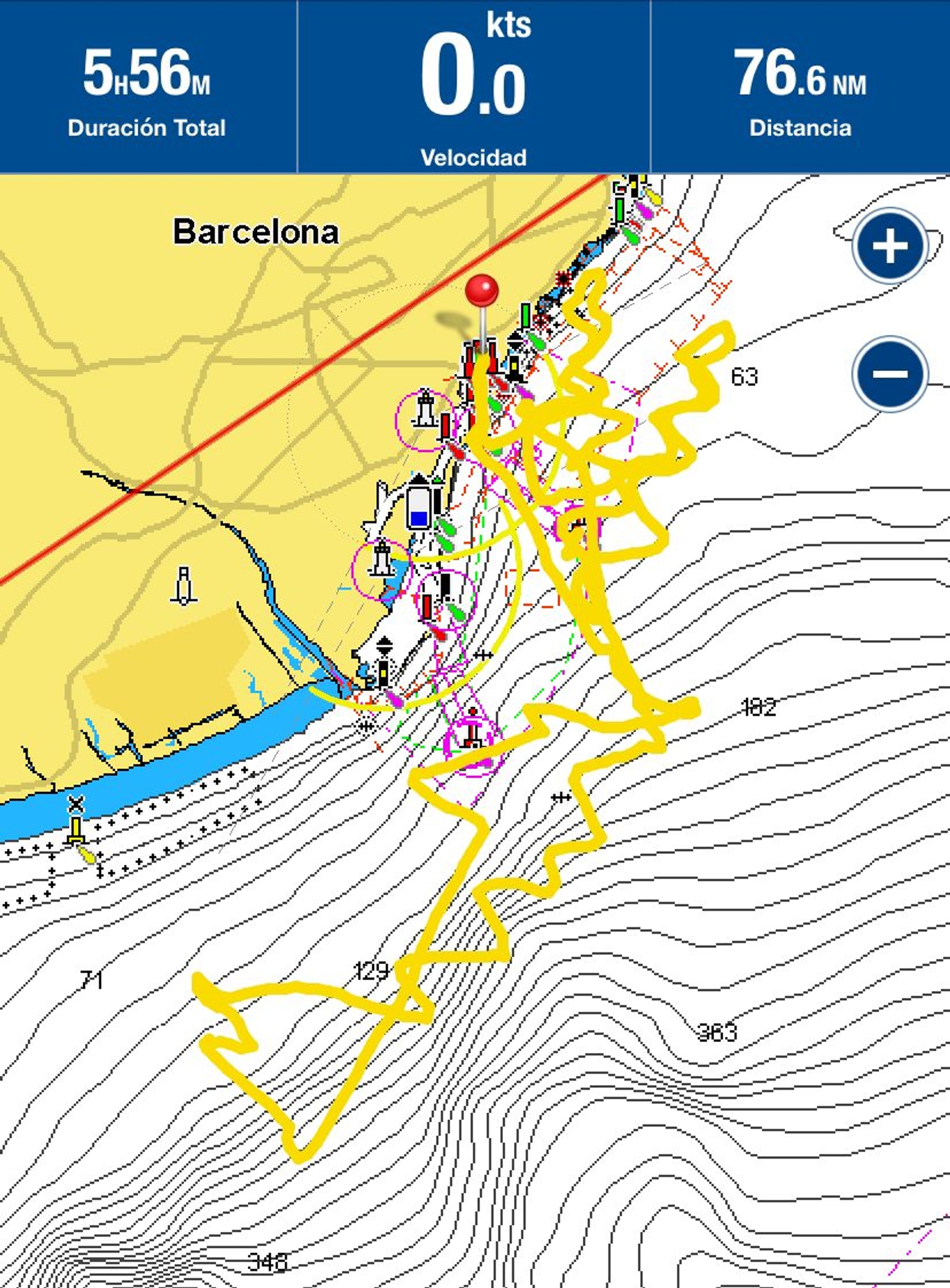
The sea-state was flat with a breeze of about 10-12 knots blowing from a TWD 190º @13:00 at the harbour entrance. RB3 started sailing a very long upwind straight-line on starboard. After around 2-3 nautical miles sailing offshore the wind became lighter and stable at 5-7 knots TWD 200. They kept sailing in the same tack for almost 7 nautical miles. After they tacked, they continued sailing upwind for 15 miles more drilling 12 tacks and some straight-lines in between. Those tacks were done in the low range with the J2 jib and we noticed they were tacking very similar to the day before with the J5 with the bow dipping at the exit of the tack. They tried different ways to enter and exit the tacks with different height, turning speed and even sometimes with roll angle to leeward before tacking.
The wind dropped and one of the chase boats towed RB3 back to Barcelona harbour to find new breeze. Around 6 to 8 knots TWD 200 @14:40 were found and they continued sailing RB3 with a downwind leg, drilling 11 gybes. These manoeuvres were quite successful, and it seemed to us that today they were trying to drop the windward foil arm as late as possible just before crossing the stern by the wind axis in the gybe.
When going back to the upwind, they had a bit more of wind than on the previous leg and they could drill more successful tacks using low heights.
They swapped batteries and changed the J2 for the J1 at about 16:40. About 30 minutes before they changed the cyclors, that was at 15:15 (they were cycling for a bit more than 90 effective minutes).
With the J1 up they sailed with quite on-the-limit winds of 4 to 6 knots TWD 180º@17:00 and they could perform one downwind and one upwind. It was quite impressive that the boat was able to take-off by itself in just 5 knots at deck level (there was, perhaps, more wind higher). The bustle and the thin and deep skeg seem to work pretty good in these light winds and flat sea conditions. The manoeuvres seen when sailing with the J1 were greater than the ones seen with the J2 in the limit range at the beginning of the session.
INEOS Britannia dropped sails at 18:05 and dock in was done at 18:30. As a summary they sailed today for 76 miles and drilled 3 upwinds (1 with very long straight lines), 2 downwind, 27 tacks (15 touch and go, 3 touch down, 9 fully foiling), 17 gybes (2 touch and go, 15 fully foiling) and 2 luffing manoeuvres. Jose Luis Piñana – INEOS Britannia AC Recon
